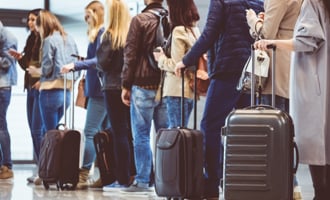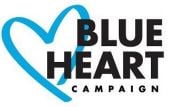
Aviation is often referred to as “the business of freedom”. The global connectivity provided by airlines link businesses to markets, reunite families and friends, and facilitate tourism and cultural exchange. Unfortunately, the global air transport system can also be misused by criminals for the illegal trafficking of men, women, and children.
Human trafficking is the fastest growing and second largest criminal industry in the world. A 2022 report by the International Labour Organization (ILO), Walk Free, and International Organization for Migration (IOM) estimate that in 2021 27.6 million people* were living in modern slavery.
Data from cases that IOM assisted over the last ten years show that nearly 80% of international human trafficking journeys cross through official border control points, including airports.
Although the responsibility for identifying, apprehending, and prosecuting those perpetrating human trafficking rests with governments and their national law enforcement agencies, the airline industry recognizes that customer-facing staff can play an important role in helping to prevent this crime.
The role of aviation in the fight against human trafficking
A resolution denouncing human trafficking was passed at the 2018 IATA Annual General Meeting. See press release and resolution text. The resolution also reaffirms airlines' commitment to several actions to help counter human trafficking:
- Sharing of best practices
- Staff training
- Reporting
Once trained, airline, airport, ground handling, security screening and customs staff can provide an important source of intelligence to prevent human trafficking. They can recognize behaviors consistent with trafficking situations and report their observations to the authorities both at airports and during flights.
Resources for airline staff training
- Free online tutorial for airline staff
- Cheat sheet (pdf) - one pager summary
- Guidance on Human Trafficking (pdf) complete guidelines for airlines
Campaign materials
- Infographic (pdf)
- Video - can be shared on any media
- English: view: Eyes open against human trafficking
- Spanish: view: Ojos abiertos contra la trata de personas
- Portuguese: view: Olhos abertos contra o tráfico de seres humanos
IATA's role
In addition to working with our member airlines to increase staff and passenger awareness, IATA is urging law enforcement agencies to provide clear, practical and anonymous mechanisms for airline staff so they can report potential trafficking situations.
IATA is also working with airports and other stakeholders within the air transport sector to raise awareness on human trafficking and share our guidance material.
IATA, together with other stakeholders collaborated with the International Civil Aviation Organization (ICAO) and the Office of the High Commissioner on Human Rights (OHCHR) to develop important guidance materials to help mobilize the aviation sector against human trafficking. These include:
- Circular 352 provides governments and operators with the framework and topics that should be included in the training package; material focuses on the identification and response to suspected human trafficking and is aimed particularly at cabin crew members.
- Circular 357 is intended to assist government authorities and airlines in managing crew reports of suspected cases of trafficking and used in conjunction with Circular 352.
- Finally, IATA contributed to the development of ICAO Doc.10171, A Comprehensive Strategy for Combatting Human Trafficking in the Aviation Sector. This enhances national counter-trafficking policies and procedure frameworks. It also equips governments, civil aviation authorities, airlines and airports with guidance and recommendations to inform the development of comprehensive counter‐trafficking strategies.
IATA position paper on Human Trafficking (pdf)
View Mira Sorvino's address about Human trafficking at the IATA AGM
*About numbers
There are no precise figures on the extent of Human Trafficking. Please find below some clarifications on numbers and definitions with their sources.
- The United Nations defines Human Trafficking as the recruitment, transportation, transfer, harboring, or receipt of persons by improper means (such as force, abduction, fraud, or coercion) for an improper purpose including forced labor or sexual exploitation.
Sources: the United Nations Convention against Transnational Organized Crime; the Protocol to Prevent, Suppress and Punish Trafficking in Persons, Especially Women and Children; the Protocol against the Smuggling of Migrants by Land, Sea and Air. - Different countries use different legal terminologies, but “modern slavery” includes the crimes of human trafficking, slavery and slavery like practices such as servitude, forced labor, forced or servile marriage, the exploitation of children, and debt bondage.
- An estimated 50 million people are in modern slavery, including 27.6 million in forced labor and 22 million in forced marriage.
Source: ILO, Walk Free and IOM. - In the figure used by IATA on this page and in all documentation related to Human Trafficking we have used the estimated number of people in forced labor, 27.6 million.
